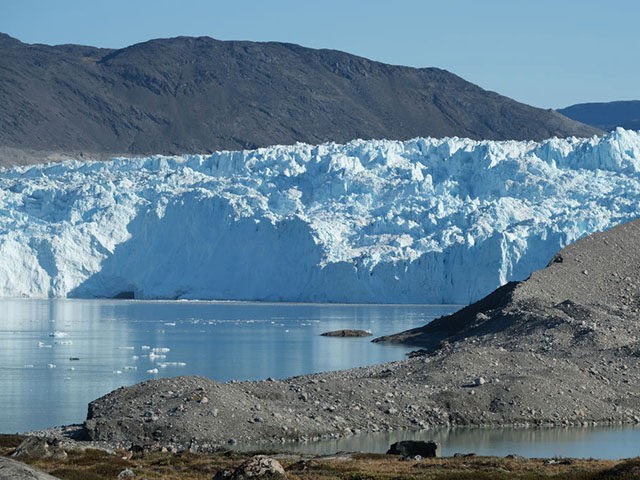As President Donald Trump’s recent interest in Greenland sparks a closer look at the Arctic island, it may be instructive to investigate the possibilities of Greenland becoming a major supply source to one of the most utilized resources in the world and one that is quickly disappearing — sand.
Greenland is home to a treasure trove of natural resources, from water to minerals (including Uranium and rare-earth reserves) to sand. Sand is not simply a nice thing to walk on when going to the beach. It’s actually a main ingredient in concrete, which is made up of water, cement and so-called aggregate – which means sand, gravel or crushed stone. Concrete consists of about 75% aggregate, usually sand. Concrete, of course, is the main building block for constructing houses, infrastructure and more.
Sand itself is also used as bedding for cables, pipes and other underground infrastructure and is the key ingredient in glass and electronics. After water, aggregate is the world’s second most utilized natural resource.
In may surprise many to learn that the planet is quickly running out of sand. A United Nations Environment Programme report titled “Sand, Rarer Than One Thinks,” documented that the mining of sand and gravel “greatly exceeds natural renewal rates” and that “the amount being mined is increasing exponentially, mainly as a result of rapid economic growth in Asia.”
The Smithsonian Magazine warned about the alarming sand trend in an article titled, “The World is Running Out of Sand.” The article documented the “little-known exploitation of this seemingly infinite resource could wreak political and environmental havoc.”
China, specifically, has been fingered for aggravating the growing sand crisis. Between 2011 and 2013 alone, China utilized more concrete than America did in the entire 20th century and it outpaces the world in cement production.
Huge amounts of sand are also being used in land reclamation projects, shale gas extraction, and the creation of artificial islands and fortification of shorelines.
Greenland is actually awash in sand due to the erosive power of melting ice.
The New York Times reported:
All told, Greenland’s ice sheet delivers about 900 million tons of sediment to the waters surrounding the island each year, or about 10 percent of all the sediment delivered to oceans worldwide. The glacier at Sermilik Fjord, about 50 miles south of the capital, Nuuk, delivers about a quarter of Greenland’s total. That explains the vast delta of sand visible from the air as well as from a research boat as the tide begins to go out. The delta, with muddy rivulets crisscrossing it, stretches to the glacier more than five miles away.
Mette Bendixen, a Danish scientist at the University of Colorado, took a closer look at Sermilik Fjord and believes that if firms could extract about 15 percent of the sediment gushing into the fjord annually that amount of sand alone would be “twice the annual demand of San Diego County in California, one of the most populous in the United States.”
The Times further reported:
Dr. Bendixen, a geomorphologist, is here to investigate an idea, one that she initially ran by colleagues to make sure it wasn’t crazy: Could this island, population 57,000, **become a provider of sand to billions of people?
…
Sermilik Fjord is only one of a number of places in Greenland with large amounts of sand. And the sand will keep coming as the world keeps warming and the ice sheet keeps melting. “It’s like a tap pouring not only water, but sediment,” she said.
Last February, a team of scientists from the U.S. and Denmark spotlighted the possibilities of sand exportation from Greenland in an article for the journal Nature Sustainability.
An abstract from the article reads:
Globally, sand and gravel reserves are rapidly depleting while the demand is increasing, largely due to urban expansion, infrastructural improvements and the enhancement of coastal protection in response to climate change. Here, we show that an abundance of sand and gravel provides an opportunity for Greenland to become a global exporter of aggregates and relieve the increasing global demand. The changing Arctic conditions help pave a sustainable way for the country towards economic independence. This way, Greenland could benefit from the challenges brought by climate change. Such exploitation of sand requires careful assessment of the environmental impact and must be implemented in collaboration with the Greenlandic society.
Aaron Klein is Breitbart’s Jerusalem bureau chief and senior investigative reporter. He is a New York Times bestselling author and hosts the popular weekend talk radio program, “Aaron Klein Investigative Radio.” Follow him on Twitter @AaronKleinShow. Follow him on Facebook.
Joshua Klein contributed research to this article.

COMMENTS
Please let us know if you're having issues with commenting.